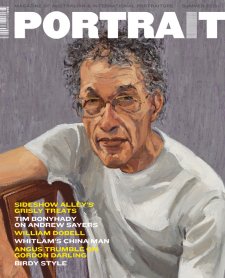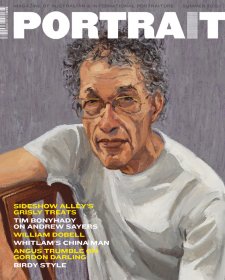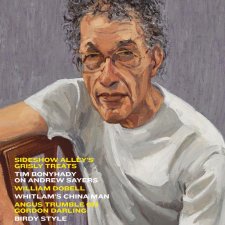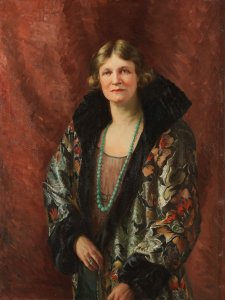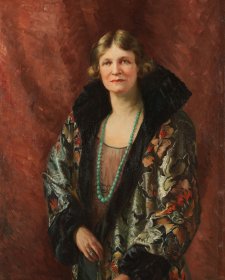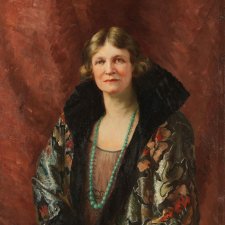ORA 2014-15, by Queensland artist Chrys Zantis, is not just a group portrait of a regional cooking club, but also a work about time. Time spent cooking and sharing meals, and time spent in conversation with strangers becoming friends. This twenty-two panel photographic artwork is the culmination of a year-long project working with the Beenleigh International Cooking Group, as part of The Homesickness Project, exhibited at Logan Art Gallery in March 2015.
The Homesickness Project was conceived and coordinated by artists Elizabeth Woods and Kevin Leong and produced in partnership with Logan Art Gallery, with support from the Australian Government through the Australia Council for the Arts, the Queensland Government through Arts Queensland, and Logan City Council. As Woods and Leong note on their website, it ‘was conceived with a simple proposition: homesickness, taken broadly as a longing for one’s “true home”, can initiate conversations that not only prompt nostalgia and sentimental reflections, but can also hold important clues to essential qualities in a home, qualities necessary for individuals to feel at home within their surrounding environment, whether this be domestic, vocational, social, cultural, political, geographical or spiritual.’
The project encompassed many different components, with Woods and Leong first working overseas with artists from Great Britain, Ireland, Switzerland and Croatia, before moving to Woodridge, Logan, to work with twelve local artists. They set up the Homesickness School in April 2014 to introduce this select group of artists to their overarching concept, and to their particular form of relational art. By discussing some of their previous projects, and projects by other artists from Australia and overseas, they encouraged the group to look at new models of community engagement. Artists were encouraged to think beyond the therapeutic benefit of community art and craft activities, and devise projects that actively give community members a voice to express their aspirations and concerns. Community members could be not only the subject of an artist’s project, but also active partners in the creative process.
Logan City, just south of the City of Brisbane, Queensland, is home to one of the most culturally diverse communities in Australia, with over 215 different cultural groups, many of whom are recent migrants and refugees. The concept of ‘home’ is not the same for all of Logan’s 300,000 residents; it is a concept influenced by both cultural and social differences. Chrys Zantis’ project with the Beenleigh International Cooking Group focused on a unique success story in our sometimes-difficult path to living in a multi-cultural society. Zantis focused on a specific community activity, the sharing of food, to show that our essential shared values enable us to live happily together as a community, while still celebrating a precious cultural diversity.
The daughter of Greek parents who migrated to Australia in the early 1950s, Zantis was born in Denham, New South Wales, and has lived and worked in Logan for the past 30 years. Since first exhibiting her art 15 year ago, she has established herself as both a much loved and respected artist and as a strong motivating character in the community, helping other artists and the art-interested public to get involved in creative projects. Her early work was greatly inspired by the feminist conceptual artists of the sixties and seventies, and is perhaps best known for her domestic teapots and cooking utensils embellished with bright pink, knitted and crocheted vaginas.
For her contribution to The Homesickness Project, Zantis naturally gravitated towards her other great passion, cooking, and chose a community group she was already very much a part of, the Beenleigh International Cooking Group. She invited her fellow members to participate in this project by each cooking a meal that represents, for them, the notion of home. This could be a national dish that when served and shared brought back nostalgic memories of another country and culture, or it might be a recipe passed down from parent to child that was always a family favourite.
The Beenleigh International Cooking Group meets regularly to share recipes and cooking tips, sometimes hearing from invited guest chefs. The group includes members originally from Spain, Greece, Great Britain, Russia, Romania, Sri Lanka and Malaysia. Over a number of months, Zantis visited fellow members to share meals and stories, while discussing each person’s individual understand of ‘home’. Although these collected stories were sometimes almost excessively sad or cloyingly sentimental, Zantis found common themes, despite the differences in the social and cultural backgrounds of each storyteller. The ritual of sharing a meal that is a binding element within a family or cultural group is also the common thread that enabled this collection of diverse individuals to become a group, creating lifelong friendships.
The next stage of the project was getting each member of the group to come and be photographed with the meal that they had cooked. They were photographed individually at a table set up on a stage, so that collectively they could be joined together to form one long ‘dinner party’. Zantis then worked long hours choosing and arranging the photographs for the final composition. A first version, favoured by some of her artist friends, was inspired by Renaissance depictions of The Last Supper with a smaller selection of the guests seating in a row and Zantis standing in the middle as the focal point. While this worked compositionally, Zantis felt it was not in keeping with the spirit of the group or the project. This was not a ‘last supper’ before a tragic conclusion, but rather a communal celebration pointing towards a better future. Zantis was uncomfortable being depicted as a figure to be adored, standing above the rest. She was one part of a collective group and much happier being seen as the mix-master, quietly sitting behind her mixer.
Zantis also wanted the final version to represent every member of the group, as, for her, the finished work is more about their collective experience of cooking, sharing and telling stories than about producing a witty photographic composition. The final work, therefore, is more akin to a Dutch 17th century Guild portrait than a Renaissance Last Supper, with flattering images of each sitter posed and arranged to form multiple visual links throughout the elongated composition of 22 individual characters. Each panel is a portrait of an individual posed with their meal like a trophy winner at the Royal Easter Show, but collectively it is a portrait of a culturally diverse community bonded together by a common love of food.

